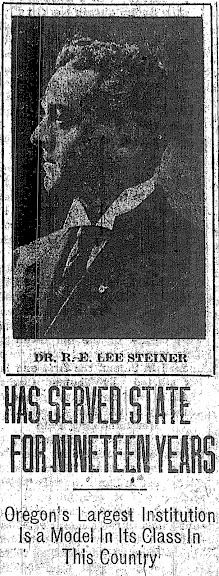The following is an article from the Oregon Statesman published May 31, 1931.
Blaze Destroys Two State Hospital Farm Barns, Loss $40,000
Excited Inmate Dashes Into Inferno, Saved With Shirt Burned
——–
Believed Incendiary; Cattle all Saved, Two by Force
Fire thought to be incendiary totally destroyed two large barns at the state hospital farm, four and one half miles east of here, at 9:15 o’clock last night. The loss on the structures and the contents is estimated at $40,000.
More than 100 head of cattle had been turned out only a few hours before the flames started. None of these were lost although two bulls, at large after keepers had loosed them, started back into the flames but were repelled by their keepers.
Man Rushes Back, Shirt Burned Off
No inmates of the hospital farm were in the barns when the flames were seen but one man, apparently deranged by the fire, started back into the blaze. Keepers rescued him but not until his shirt was burned. It was necessary to handcuff him to keep him away from the fire.
Attendants at the state hospital farm did not discover the flames until they had started to lick their way through the roof of the large barn. The headway the fire had gained inclined them to the theory that some inmate had started the blaze. A few years ago a state hospital inmate started another fire. Read the rest of this entry »
 Dr. R.E. Lee Steiner served as superintendent of the Oregon State Hospital from 1908 (when he officially took office) through 1937. The following article was published in the
Dr. R.E. Lee Steiner served as superintendent of the Oregon State Hospital from 1908 (when he officially took office) through 1937. The following article was published in the 

